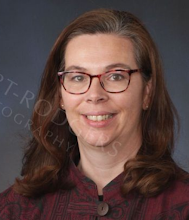Whenever I get ready to call my parents these days, I have to psych myself up. Not because I don’t want to talk with them, but because I know I have to bring my “A” game to the conversation. If I want to complain about something, I need to be prepared to troubleshoot; if I have news to share, I need to be prepared with lots of information. Once we’re talking, it’s wonderful! But it’s been this way for as long as I can remember.
Growing up, my mother had a knack for asking the one question I could not answer. Not in a bad way, though— it was as though she believed I had the answer or could find it. Both her and my dad also made a point to praise my successes as they observed them. And for all the things I was bad at (and there was plenty; still are) they were great at acknowledging my frustration while simultaneously redirecting and encouraging me. They were both (and still are) amazing at accentuating the positive without ignoring the negative. They inspired confidence!
I received a gift from a parent my last year in New Jersey. It was a token of her appreciation, but it was the note that came with it that I appreciated most— it read, “You instill confidence.” As an educator, this was the best compliment I could receive and I didn’t even know it until I read it.
Since then, I’ve spent a lot of time thinking about how I encourage students, what is possible through coaching and how asking the right questions can motivate students to not only find answers but also try new learning strategies on their own. In a lot of ways, this is essentially what my parents did for me but with greater focus on skill-building. Giving students an opportunity to reflect on their attempts and intentions allows them to better understand their potential, identify gaps in their developing skills and determine how to best close those gaps. Since receiving that inspiring thank you note a year ago, I believe this is what instilling confidence is all about. It also happens to be the action plan associated with Assessment for Learning, heralded by Rick Stiggins, Jan Chappuis and others in Portland, Oregon as part of the Assessment Training Institute.
I always go back to Vygotsky’s Zones of Proximal Development when I assess what could work for students and what’s not working. I have to listen to their routines and their habits to find “windows” of opportunity for improvement. If I can point out patterns to their routine or regularities in their habits, we’ve pinpointed that window. I often start with asking about preferences: time or task? This, in the context of a desired short-range goal—prepping for cumulative exams or embarking on a long-term research project, for example—provides the laboratory for experimentation. If they seem more task oriented, we start there; if time boundaries appeal, we start there. Always, though, this starts as a conversation.
By the end of the conversation, the student and I have worked together to identify specifics related to task, time, outcome and how to begin. We are deliberate about these specifics, always committing them to writing using language that speaks to what the student can and wants to do and how to best leverage what already works. We end our session agreeing to check-in and debrief on the plan.Then, when I see students in the hall, outside of school or on their way in or out, I like to think that seeing me reminds them of the commitment they’ve made to themselves and the confidence I have that they can do what they have expressed a desire to accomplish.

No comments:
Post a Comment